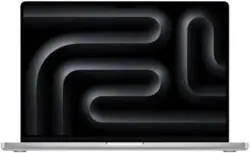
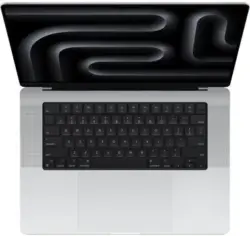






Out of stock
Payment Methods:

| Screen Size |
14.2'' |
|---|

| Generation |
Apple M3 Generation |
|---|

| RAM |
18 GB |
|---|

| Storage |
512 GB SSD |
|---|
| Brand |
Apple |
|---|---|
| Series |
Macbook Pro |
| Operating System |
Mac OS |
| Generation |
Apple M3 Generation |
|---|---|
| Processor Type |
M3 Pro |
| Processor Model |
Info n/a |
| Processor Speed |
Info n/a |
| Screen Size |
14.2'' |
|---|---|
| Screen Resolution |
3024 x 1964 |
| Touch Screen |
No |
| RAM |
18 GB |
|---|
| Storage Interface |
SSD |
|---|---|
| Storage |
512 GB SSD |
| Graphics |
Info n/a |
|---|---|
| Graphics Type |
Info n/a |
| Graphics Memory |
Shared |
| USB Ports |
2 Ports |
|---|---|
| HDMI |
Yes |
| Optical Drive |
No Optical Drive |
|---|---|
| Numeric Pad |
No |
| Backlit Keyboard |
Yes |
| Warranty |
Manufacturer Warranty |
|---|
The industry’s first 3-nanometer chips for a personal computer debut a next-generation GPU architecture and deliver dramatic performance improvements, a faster CPU and Neural Engine, and support for more unified memory
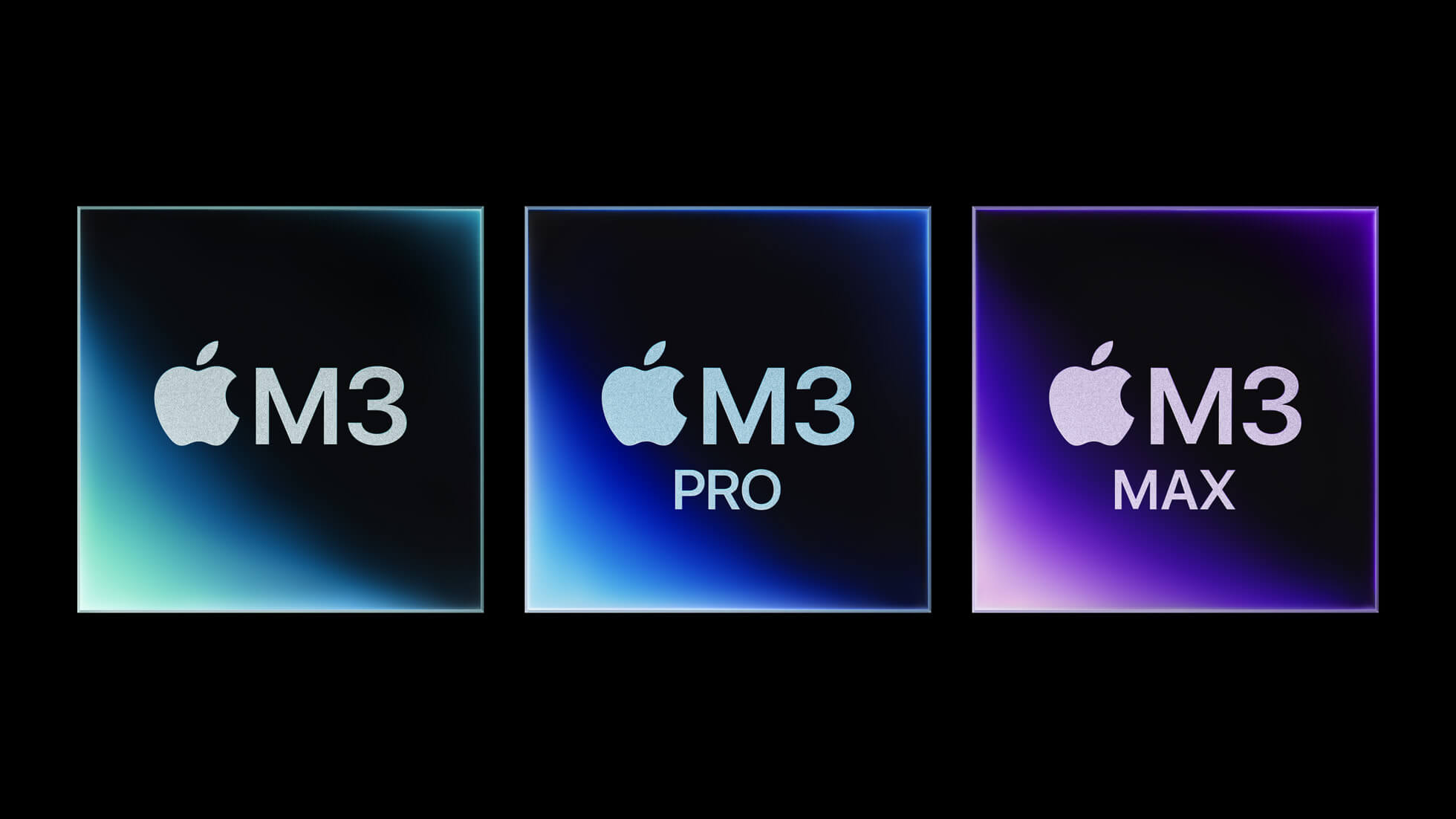
For the first time, Apple is introducing three chips at once: M3, M3 Pro, and M3 Max, the most advanced chips ever built for a personal computer.
Apple today announced M3, M3 Pro, and M3 Max, three chips featuring groundbreaking technologies that deliver dramatically increased performance and unleash new capabilities for Mac. These are the first personal computer chips built using the industry-leading 3-nanometer process technology, allowing more transistors to be packed into a smaller space and improving speed and efficiency. Together, M3, M3 Pro, and M3 Max show how far Apple silicon for the Mac has come since the debut of the M1 family of chips.
Apple today announced M3, M3 Pro, and M3 Max, three chips featuring groundbreaking technologies that deliver dramatically increased performance and unleash new capabilities for Mac. These are the first personal computer chips built using the industry-leading 3-nanometer process technology, allowing more transistors to be packed into a smaller space and improving speed and efficiency. Together, M3, M3 Pro, and M3 Max show how far Apple silicon for the Mac has come since the debut of the M1 family of chips.
The M3 family of chips features a next-generation GPU that represents the biggest leap forward in graphics architecture ever for Apple silicon. The GPU is faster and more efficient, and introduces a new technology called Dynamic Caching, while bringing new rendering features like hardware-accelerated ray tracing and mesh shading to Mac for the first time. Rendering speeds are now up to 2.5x faster than on the M1 family of chips. The CPU performance cores and efficiency cores are 30 percent and 50 percent faster than those in M1, respectively, and the Neural Engine is 60 percent faster than the Neural Engine in the M1 family of chips. And, a new media engine now includes support for AV1 decode, providing more efficient and high-quality video experiences from streaming services. The M3 family of chips continues the tremendous pace of innovation in Apple silicon, and brings massive enhancements and new features to the new MacBook Pro and iMac.
“Apple silicon has completely redefined the Mac experience. Every aspect of its architecture is designed for performance and power efficiency,” said Johny Srouji, Apple’s senior vice president of Hardware Technologies. “With 3-nanometer technology, a next-generation GPU architecture, a higher-performance CPU, faster Neural Engine, and support for even more unified memory, M3, M3 Pro, and M3 Max are the most advanced chips ever built for a personal computer.”
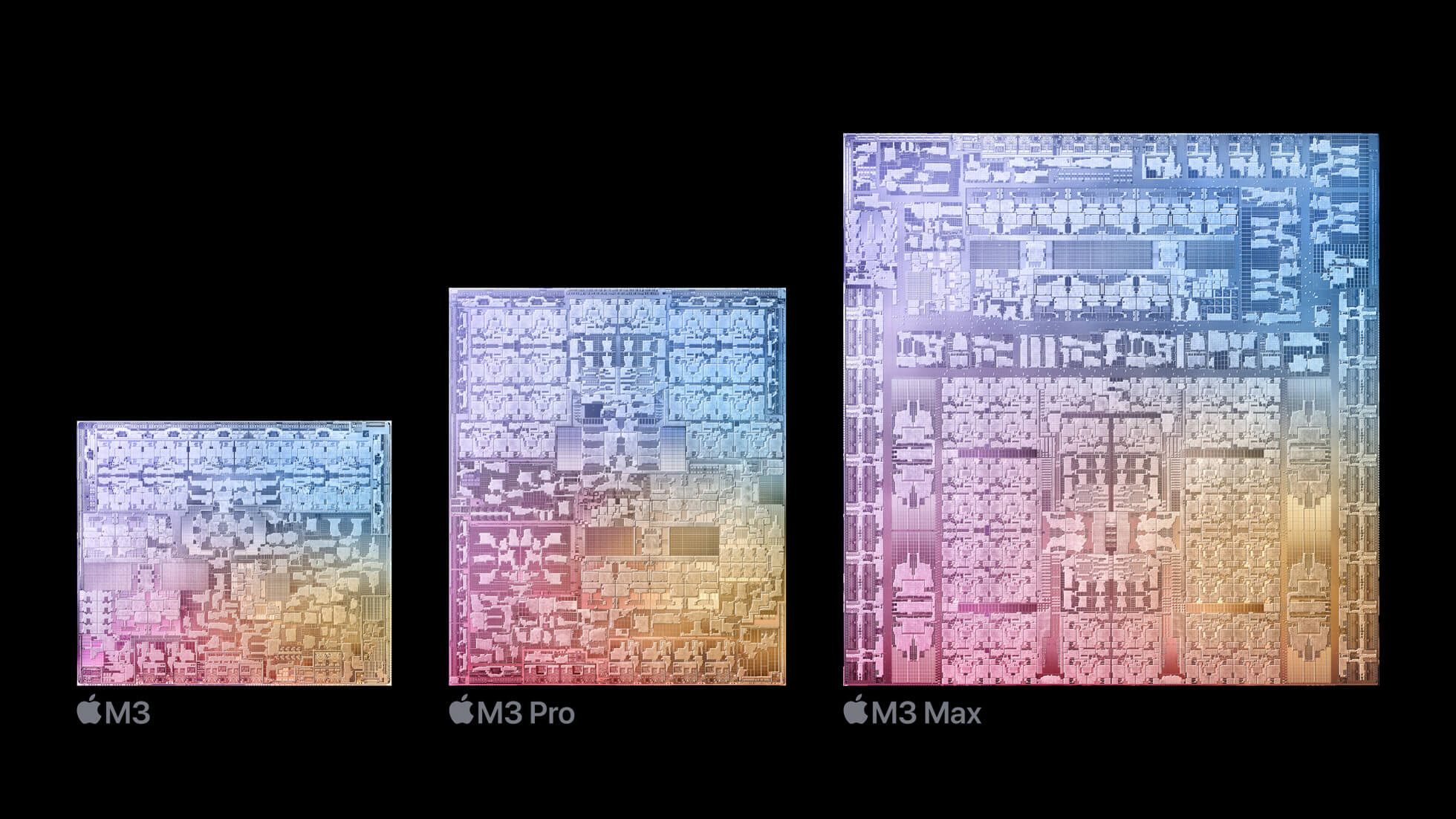
The M3 family of chips is built using the industry-leading 3-nanometer process technology, and continues the tremendous pace of innovation in Apple silicon.
With the M3 family of chips, hardware-accelerated ray tracing comes to the Mac for the first time. Ray tracing models the properties of light as it interacts with a scene, allowing apps to create extremely realistic and physically accurate images. This, along with the new graphics architecture, allows pro apps to deliver up to 2.5x the speed of the M1 family of chips. Game developers can use ray tracing for more accurate shadows and reflections, creating deeply immersive environments. Additionally, the new GPU brings hardware-accelerated mesh shading to the Mac, delivering greater capability and efficiency to geometry processing, and enabling more visually complex scenes in games and graphics-intensive apps. This breakthrough GPU architecture enables all of these enhancements and features while maintaining Apple silicon’s legendary power efficiency. In fact, the M3 GPU is able to deliver the same performance as M1 using nearly half the power, and up to 65 percent more performance at its peak.
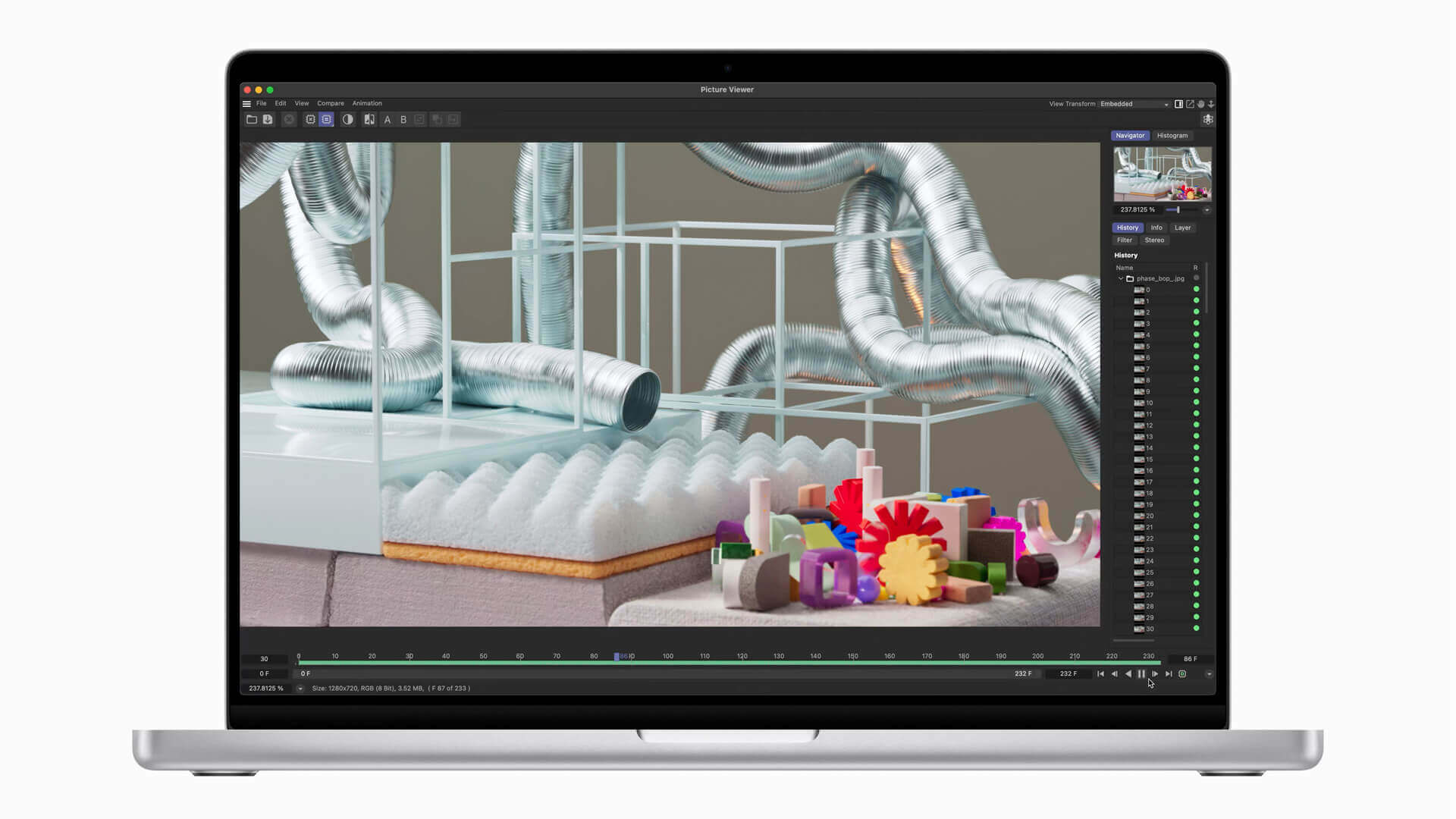
The next-generation GPU inside the M3 family of chips represents the largest leap forward in graphics architecture ever for Apple silicon, featuring Dynamic Caching, mesh shading, and hardware-accelerated ray tracing.

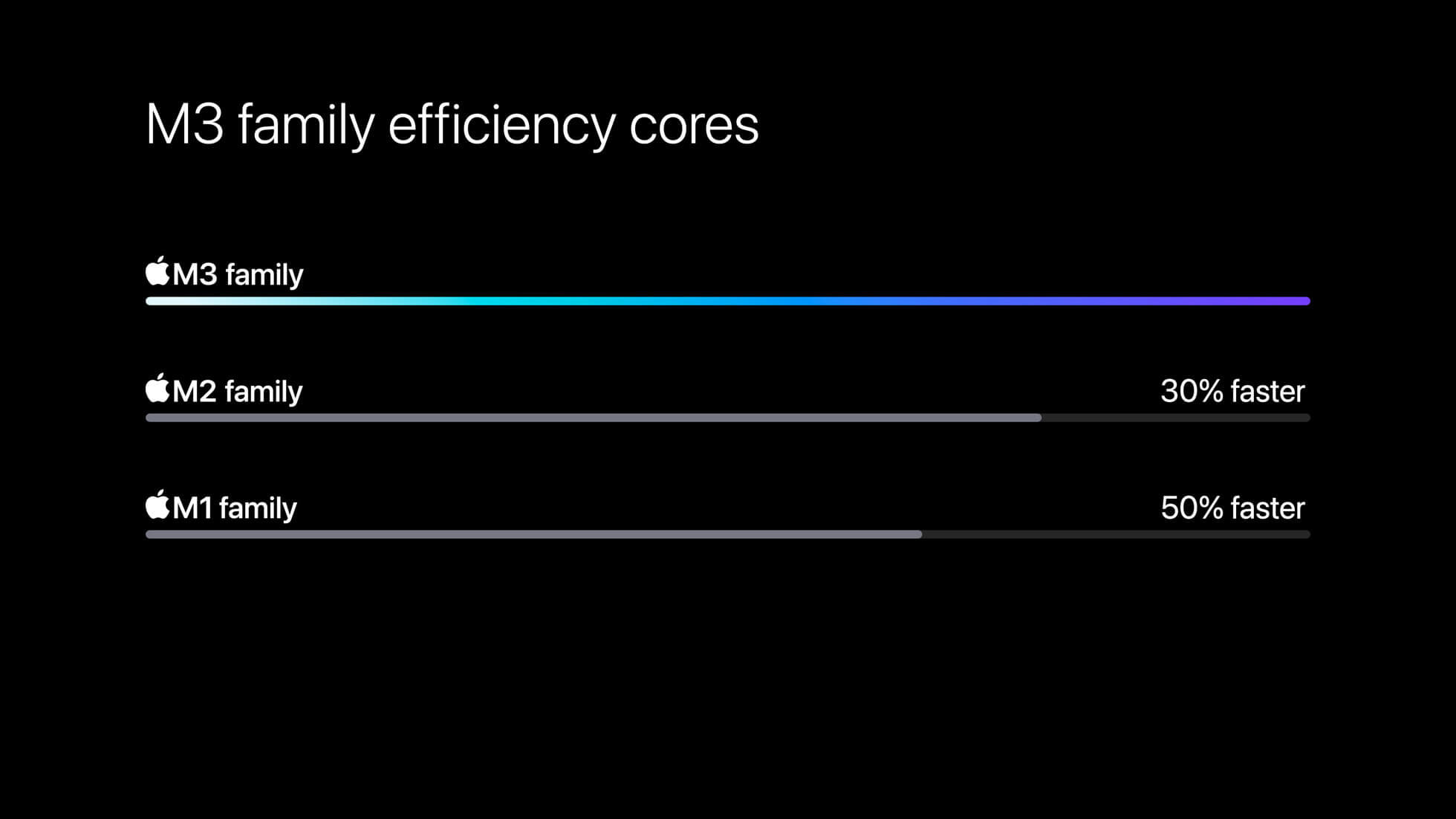
Each chip in the M3 family features a unified memory architecture, a hallmark of Apple silicon. This delivers high bandwidth, low latency, and unmatched power efficiency. Having a single pool of memory within a custom package means all of the technologies in the chip can access the same data without copying it between multiple pools of memory, further improving performance and efficiency, and reducing the amount of memory a system requires for the majority of tasks. Additionally, support for up to 128GB of memory unlocks workflows previously not possible on a laptop, such as AI developers working with even larger transformer models with billions of parameters.
Each chip in the M3 family features a unified memory architecture, a hallmark of Apple silicon. This delivers high bandwidth, low latency, and unmatched power efficiency. Having a single pool of memory within a custom package means all of the technologies in the chip can access the same data without copying it between multiple pools of memory, further improving performance and efficiency, and reducing the amount of memory a system requires for the majority of tasks. Additionally, support for up to 128GB of memory unlocks workflows previously not possible on a laptop, such as AI developers working with even larger transformer models with billions of parameters.
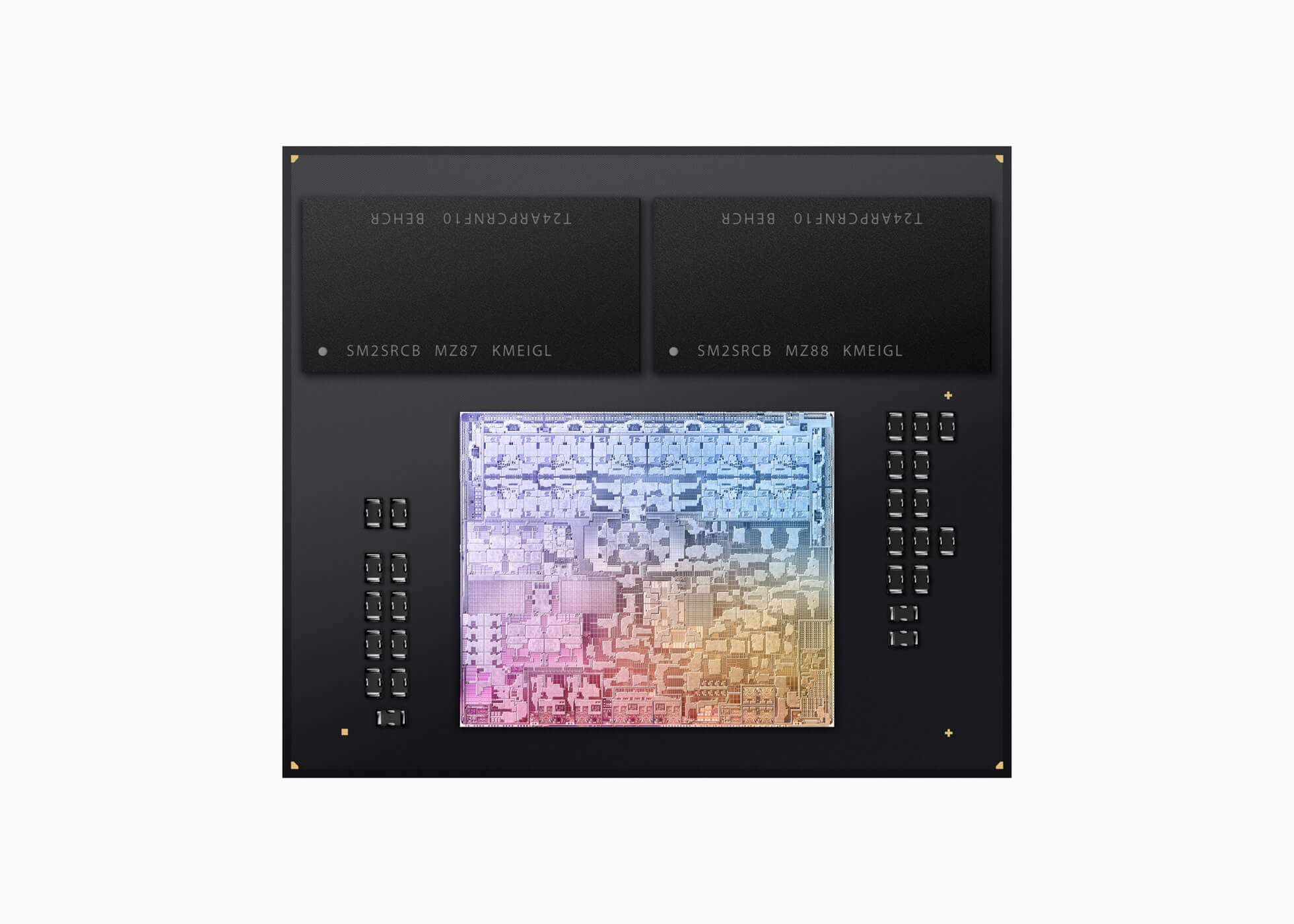
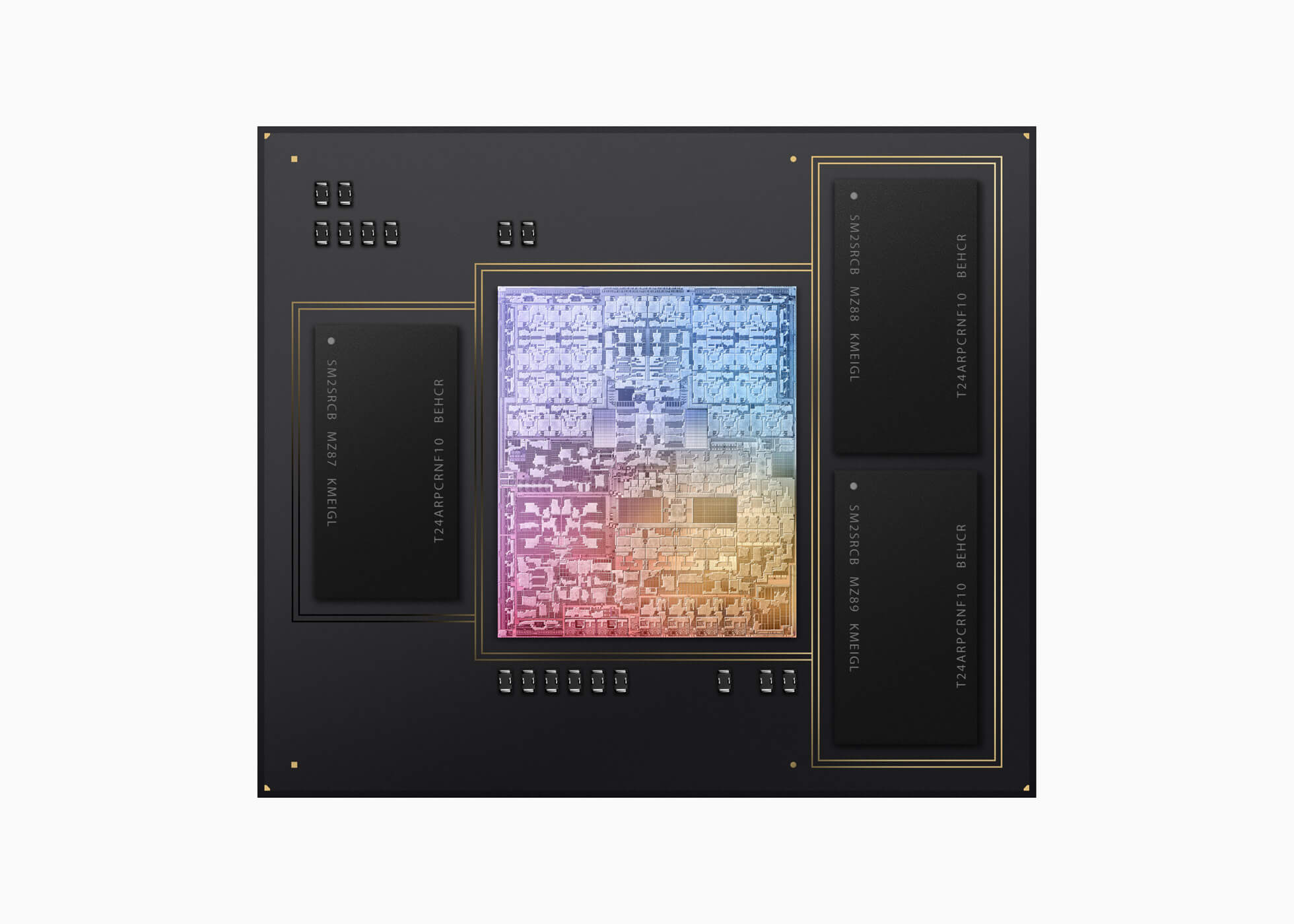
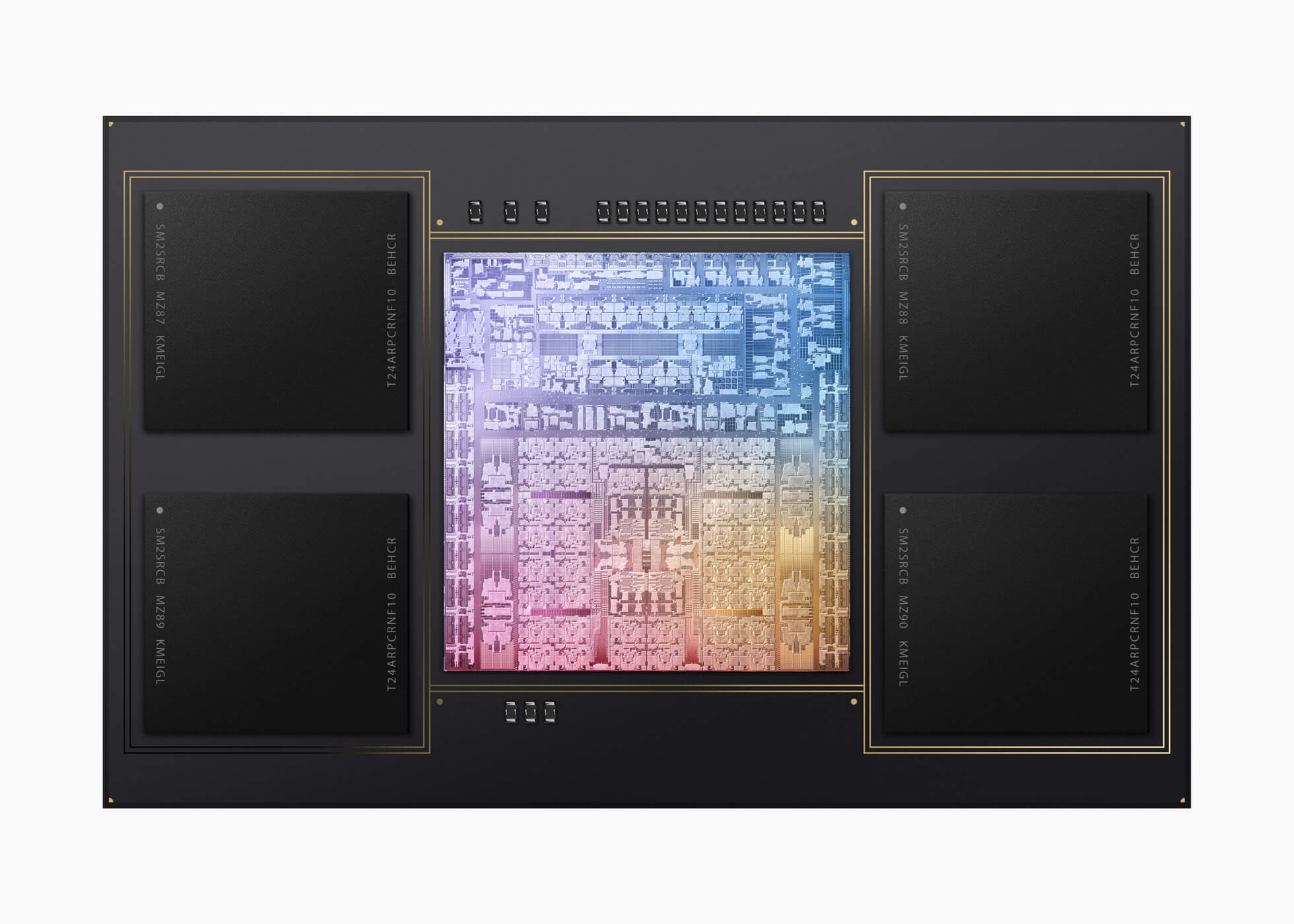
All three chips in the M3 family also have an advanced media engine, providing hardware acceleration to the most popular video codecs, including H.264, HEVC, ProRes, and ProRes RAW. And for the first time, the media engine supports AV1 decoding, enabling power-efficient playback of streaming services to further extend battery life.
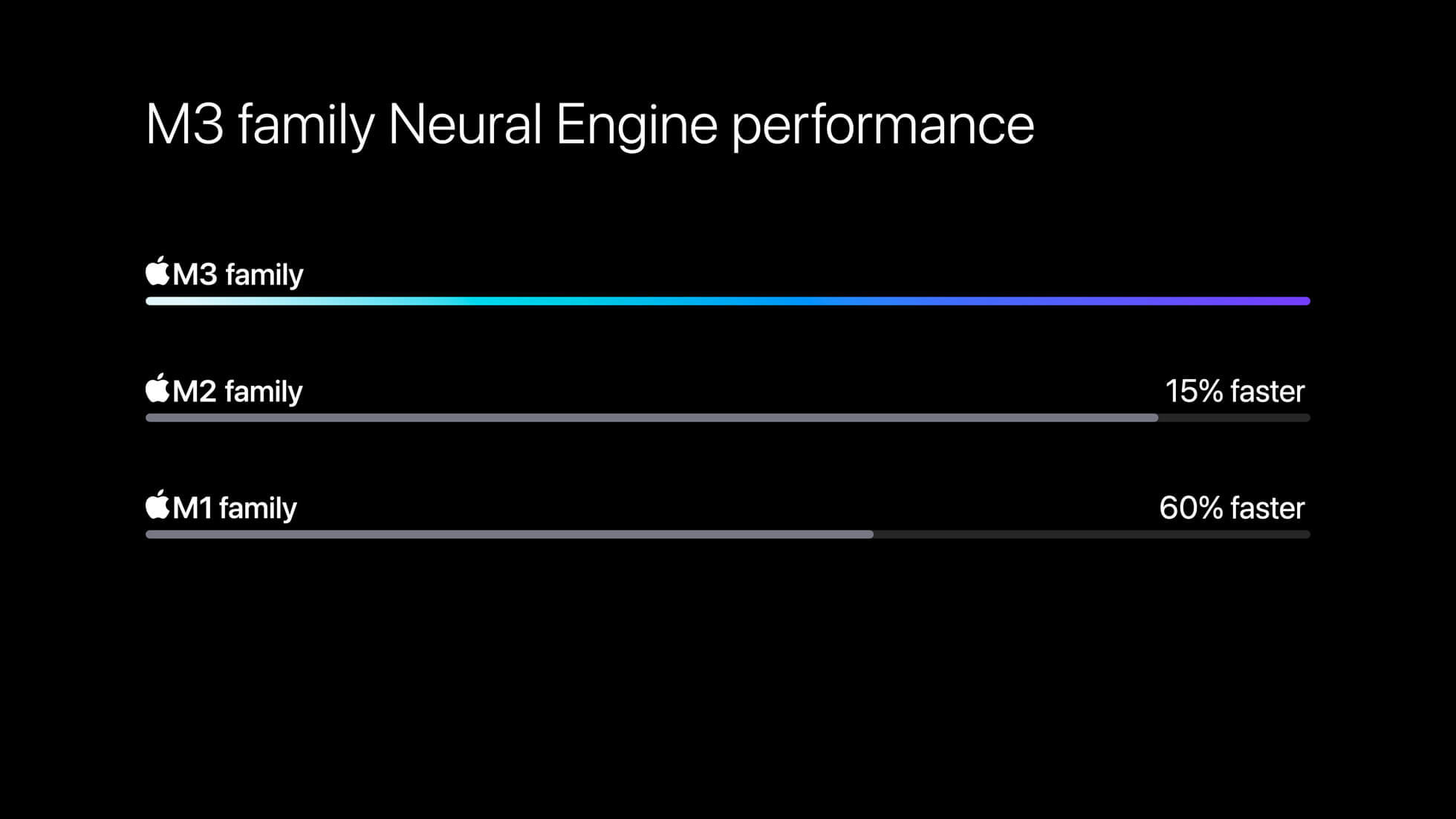
The Neural Engine in M3, M3 Pro, and M3 Max is up to 60 percent faster than in the M1 family of chips, making AI and machine learning workflows even faster.
M3 features 25 billion transistors — 5 billion more than M2. It has a 10-core GPU featuring the next-generation architecture that is 65 percent faster than M1 for graphics performance. Games like Myst have incredibly realistic lighting, shadows, and reflections. M3 has an 8-core CPU, with four performance cores and four efficiency cores, that is up to 35 percent faster than M1 for CPU performance. And it supports up to 24GB of unified memory.
M3 features 25 billion transistors — 5 billion more than M2. It has a 10-core GPU featuring the next-generation architecture that is 65 percent faster than M1 for graphics performance. Games like Myst have incredibly realistic lighting, shadows, and reflections. M3 has an 8-core CPU, with four performance cores and four efficiency cores, that is up to 35 percent faster than M1 for CPU performance. And it supports up to 24GB of unified memory.

Graphics-intensive games like Myst have incredibly realistic lighting, shadows, and reflections, thanks to the next-generation GPU of M3.
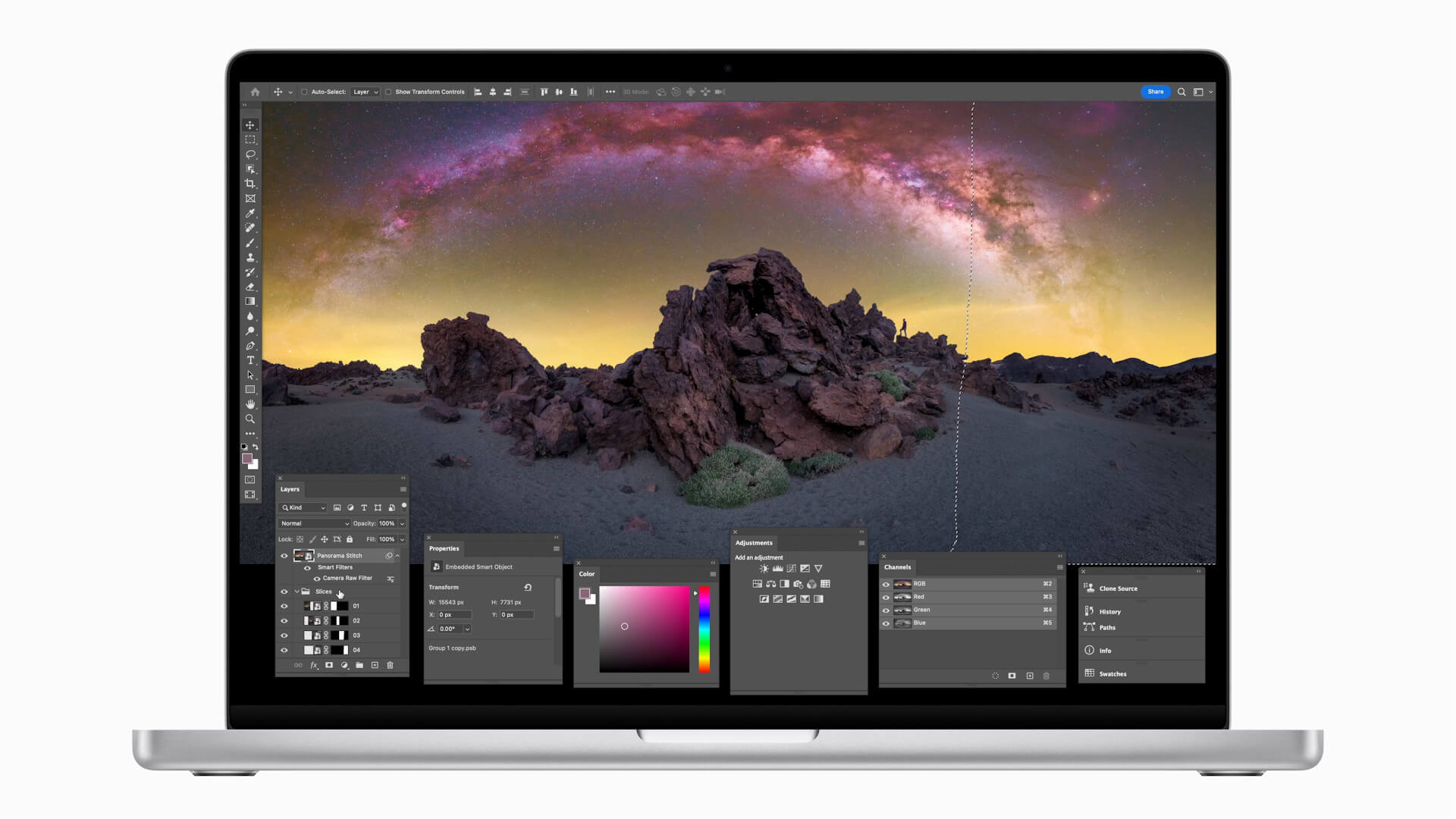
Tasks like stitching together and manipulating enormous panoramic photos in Adobe Photoshop are faster than ever with the GPU and CPU of M3 Pro.
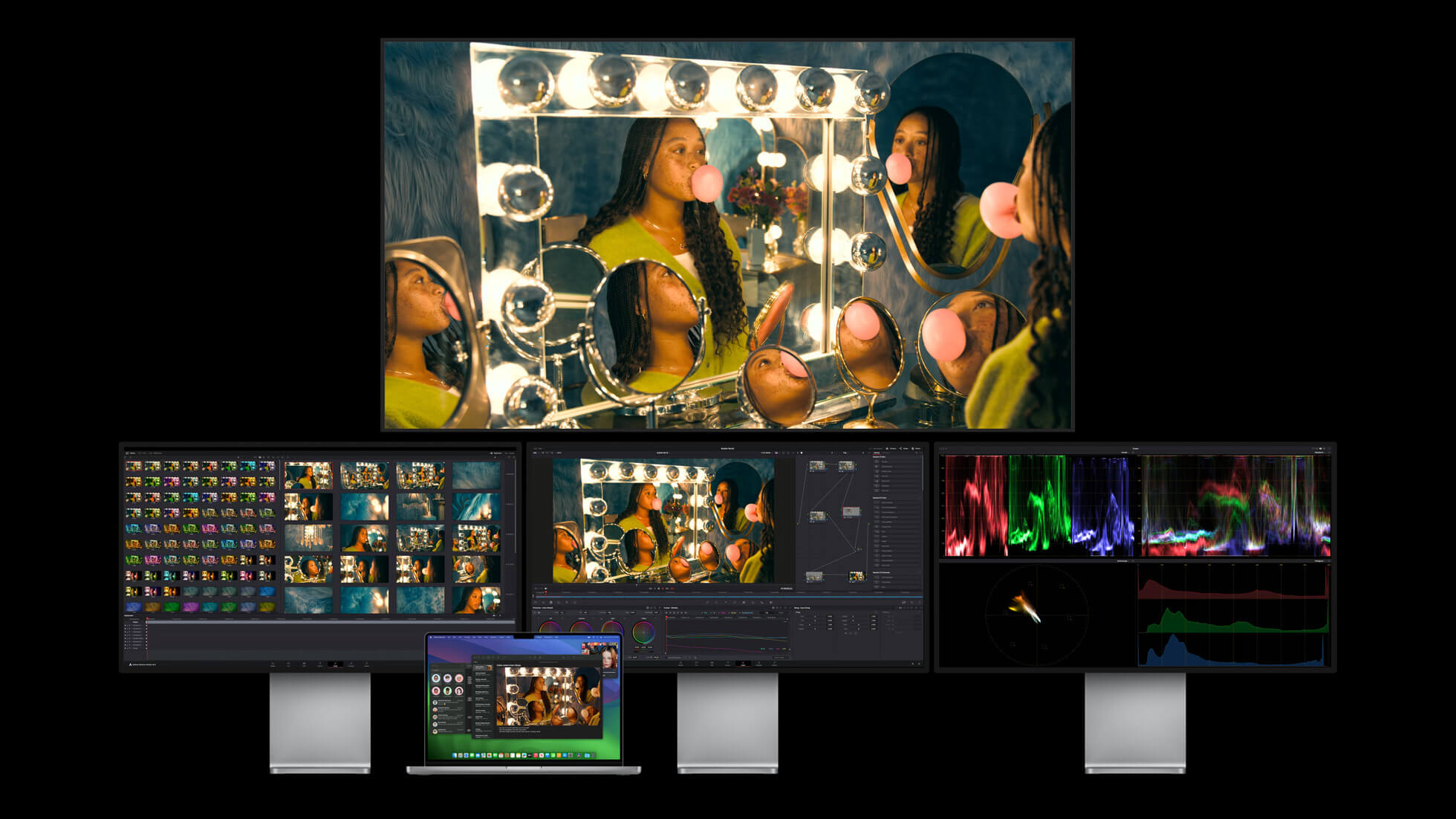
M3 Max consists of 92 billion transistors and delivers a tremendous increase in performance for the most demanding pro workloads.
Today, Apple is carbon neutral for global corporate operations, and by 2030, plans to have net-zero climate impact across the entire business, which includes the entire manufacturing supply chain and life cycle of every product. This means that every chip in every Mac, from design to manufacturing, will be carbon neutral.
Today, Apple is carbon neutral for global corporate operations, and by 2030, plans to have net-zero climate impact across the entire business, which includes the entire manufacturing supply chain and life cycle of every product. This means that every chip in every Mac, from design to manufacturing, will be carbon neutral.


When it comes to online shopping in Pakistan, Gadgets360 prides itself on providing you with a clear and transparent shipping policy.
What is the estimated delivery time?
We understand the excitement you experience when shopping online. That’s why we’re equally excited to deliver the product without a scratch and as quickly as possible. While we try to get your product into your hands as fast as possible, all online orders usually take 24-72 hours to be there. In extremely rare cases, it may take up to 5 working days. Like you, our valued staff likes to enjoy life as well. As such, the only times Pakistan Store can’t deliver are Sundays and Public Holidays.
Express Shipping
Unless specified on the Product Detail Page, Gadgets360 offers its online shoppers the convenience of fast shipping. Where shipping charges are applicable, such as when we use our reliable courier service, we will clearly inform you before you finalize your purchase.
Shipping Invoice
Gadgets360 provides a detailed shipping invoice with each order checkout page, outlining the price, quantities, and shipping charges (where applicable). If you would like further clarification about gadgets360’s payment options, feel free to contact us on (+92) 3 111 100 567 or email us at [email protected]
Only logged in customers who have purchased this product can post reviews.
No account yet?
Create an Account
Reviews
There are no reviews yet